
Thornton Abbey was a medieval abbey located close to the small North Lincolnshire village of Thornton Curtis, near Ulceby, and directly south of Hull on the other side of the Humber estuary. Its ruins are a Grade I listed building, including notably England's largest and most impressive surviving monastic gatehouse.

Glastonbury Abbey was a monastery in Glastonbury, Somerset, England. Its ruins, a grade I listed building and scheduled ancient monument, are open as a visitor attraction.

Pensford is the largest village in the civil parish of Publow in Somerset, England. It lies in the Chew Valley, approximately 7 miles (11 km) south of Bristol, 8 miles (13 km) west of Bath, and 14 miles (23 km) north of Wells. It is on the A37 road from Bristol to Shepton Mallet.
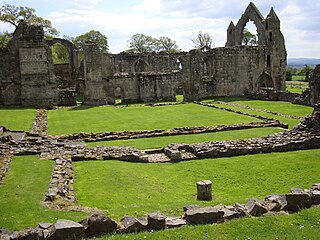
Haughmond Abbey is a ruined, medieval, Augustinian monastery a few miles from Shrewsbury, England. It was probably founded in the early 12th century and was closely associated with the FitzAlan family, who became Earls of Arundel, and some of their wealthier vassals and allies. It was a substantial, successful and wealthy house for most of its four centuries, although evidence of abuses appeared before its dissolution in 1539. The buildings fell into disrepair and the church was largely destroyed, although the remains of some of the domestic buildings remain impressive. The site is now in the care of English Heritage and is open to the public throughout the year and free entry.

Publow is a small village and civil parish in Bath and North East Somerset, England. It lies beside the River Chew in the Chew Valley. It is 7 miles from Bristol, 9 miles from Bath, and 4 miles from Keynsham. The principal settlement in the parish is Pensford. The parish also includes the village of Belluton and part of the village of Woollard. At the 2011 census it had a population of 1,119.

Woollard is a small village on the River Chew in the affluent Chew Valley in England. It is in the Bath and North East Somerset council area and the ceremonial county of Somerset. The village is 7 miles (11 km) from Bristol, 9 miles (14 km) from Bath, and 4 miles (6.4 km) from Keynsham.
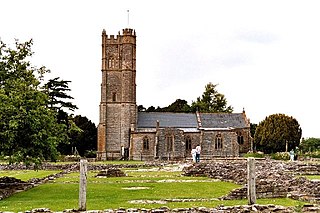
Muchelney Abbey is an English Heritage property in the village of Muchelney in the Somerset Levels, England. The site consists of ruined walls showing the layout of the abbey buildings constructed from the 7th to 16th centuries, and the remaining intact Abbot's House. It is next to the parish church in which some of the fabric of the abbey has been reused.
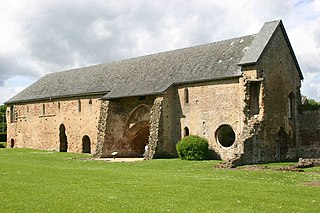
Cleeve Abbey is a medieval monastery located near the Washford River and village of Washford, in the English county of Somerset. It is a Grade I listed building and has been scheduled as an ancient monument.

Notley Abbey was an Augustinian abbey founded in the 12th century near Long Crendon, Buckinghamshire, England. A team from Oxford excavated Notley Abbey in 1937, establishing a layout and timeline of the building's construction. The building has been visited by notable figures such as Henry V, and was owned by the celebrities Laurence Olivier and Vivien Leigh. Today, the remnants of the abbey are owned by the company Bijou Wedding Venues and are used to host weddings.

Norton Priory is a historic site in Norton, Runcorn, Cheshire, England, comprising the remains of an abbey complex dating from the 12th to 16th centuries, and an 18th-century country house; it is now a museum. The remains are a scheduled ancient monument and are recorded in the National Heritage List for England as a designated Grade I listed building. They are considered to be the most important monastic remains in Cheshire.

Missenden Abbey is a former Arrouasian (Augustinian) monastery, founded in 1133 in Great Missenden, Buckinghamshire, United Kingdom. The abbey was dissolved in 1538, and the abbey church demolished. In 1574 a house, also known as Missenden Abbey, was constructed on the site of the monastic cloisters, incorporating some of the monastic remains. The house was altered several times, gaining its current "Regency Gothic" style at the beginning of the 19th century. The house was "gutted" by fire in 1985 and subsequently rebuilt.
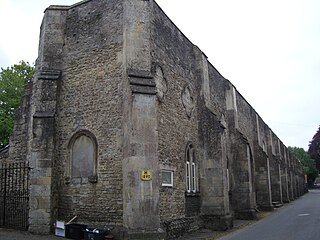
Bruton Abbey in Bruton, Somerset was founded as a house of Augustinian canons in about 1127, and became an abbey in 1511, shortly before its dissolution in 1539. It was endowed with manors, churches and other properties in the area and also in Normandy in France.

Tupholme Abbey was a Premonstratensian abbey close to the River Witham some 10.5 miles (16.9 km) east of the city of Lincoln, England and one of nine such abbeys within the historical county. The Witham valley in Lincolnshire is notable for its high concentration of monasteries—there were six on the east bank and three on the west—all presumably drawn to the area by the usefulness of the River Witham for transport and by the wealth that it transported. The abbey was largely destroyed by 1538, after being seized during Henry VIII's Dissolution of the Monasteries.
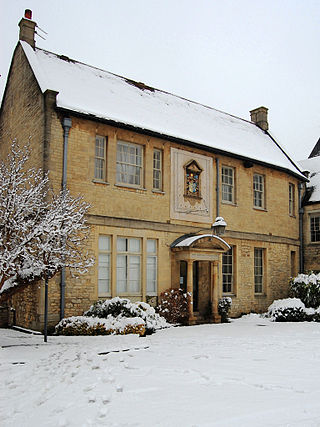
St Mary's College was a former college in Oxford, England. It is not to be confused with the two other colleges also named "St. Mary's", more commonly known as Oriel College and New College.

Leonard Stanley Priory was a priory in Gloucestershire, England. Over the years following the dissolution most of the buildings of the priory complex have been destroyed.

Owston Abbey was an Augustinian monastery in Owston, Leicestershire, England.

The Bishop of Bristol heads the Church of England Diocese of Bristol in the Province of Canterbury, in England.
The Hundred of Keynsham is one of the 40 historical Hundreds in the ceremonial county of Somerset, England, dating from before the Norman conquest during the Anglo-Saxon era although exact dates are unknown. The structure, history, and development of the hundred and its putative Romano-British predecessor, from the mid-4th century to the mid-16th, have been studied in detail by Dr Lee Prosser. Each hundred had a 'fyrd', which acted as the local defence force and a court which was responsible for the maintenance of the frankpledge system. They also formed a unit for the collection of taxes. The role of the hundred court was described in the Dooms (laws) of King Edgar. The name of the hundred was normally that of its meeting-place.

The Abbey of Saint Mary de Pratis, more commonly known as Leicester Abbey, was an Augustinian religious house in the city of Leicester, in the East Midlands of England. The abbey was founded in the 12th century by the Robert de Beaumont, 2nd Earl of Leicester, and grew to become the wealthiest religious establishment within Leicestershire. Through patronage and donations the abbey gained the advowsons of countless churches throughout England, and acquired a considerable amount of land, and several manorial lordships. Leicester Abbey also maintained a cell at Cockerham Priory, in Lancashire. The Abbey's prosperity was boosted through the passage of special privileges by both the English Kings and the Pope. These included an exemption from sending representatives to parliament and from paying tithe on certain land and livestock. Despite its privileges and sizeable landed estates, from the late 14th century the abbey began to suffer financially and was forced to lease out its estates. The worsening financial situation was exacerbated throughout the 15th century and early 16th century by a series of incompetent, corrupt and extravagant abbots. By 1535 the abbey's considerable income was exceeded by even more considerable debts.





















